What Is the Secret to Art That Looks Like a Child Could Do It
Ane of the great things nearly fine art is that it'south always open to interpretation. You lot tin can pore over your favorite painting over and over once more and still notice a new cryptic symbol or hidden detail.
Some of the nigh famous artists in the world intentionally put secret messages in their paintings, whether to subvert say-so, challenge audiences, or reveal something about themselves. Hundreds of years later, thanks to advancements in technology, many of these underground messages are starting time beingness discovered. So read on to acquire 25 mind-blowing secrets hidden in the virtually famous works of art.
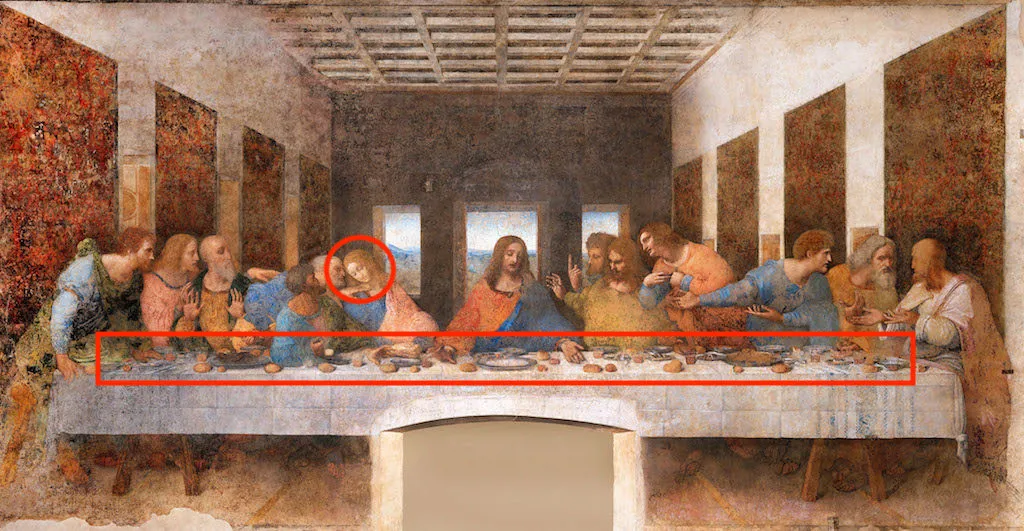
If you've readDan Brown'sThe Da Vinci Code, you lot know that this late 15th-century landscape pastLeonardo da Vinci has been the subject field of lots of speculation.
Brown proposed that the disciple to the correct of Jesus is actually Mary Magdalene disguised as John the Apostle. He also suggests that the "5" shape that forms between Jesus and "John" represents a female person womb, which implies that Jesus and Mary Magdalene had a child together.
Art historians, even so, are skeptical. Many suggest that John's appearance is feminine but because that's often how he was depicted. ProficientMario Taddeitold Artnet.com: "Leonardo had to copy the last suppers before him, and John looks similar a adult female."
But a much more compelling secret message was discovered past Italian figurer technician Giovanni Maria Pala. He claims that Da Vinci hid musical notes within "The Last Supper" that, when read from left to correct, correspond to a 40-second hymn that sounds similar a requiem.
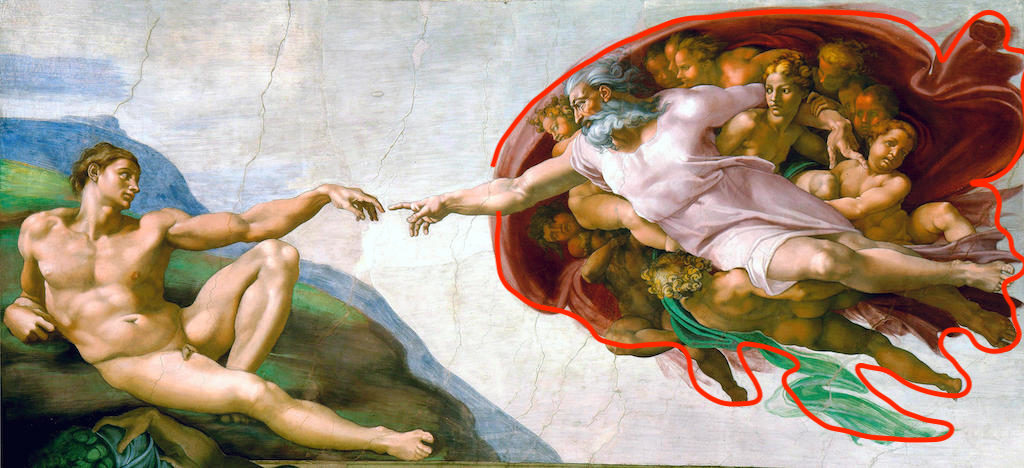
"The Creation of Adam" is probably the almost famous of the 9 biblical panelsMichelangelo painted on the ceiling of the Sistine Chapel. But did you know the scene contained a hidden homo brain?
It turns out, Michelangelo was an proficient in human anatomy. At 17, he had a somewhat grisly job dissecting corpses from the church building graveyard. According to neuroanatomy expertsIan Suk and Rafael Tamargo, the painter placed some carefully concealed illustrations of certain body parts onto the ceiling of the Sistine Chapel. And if you wait at the shroud surrounding God in "The Creation of Adam," you'll find that it creates an anatomical illustration of the human being brain.
Suk and Tamargo believe Michelangelo intended for the encephalon to stand for the idea that God was endowing Adam not merely with life, but also man knowledge.
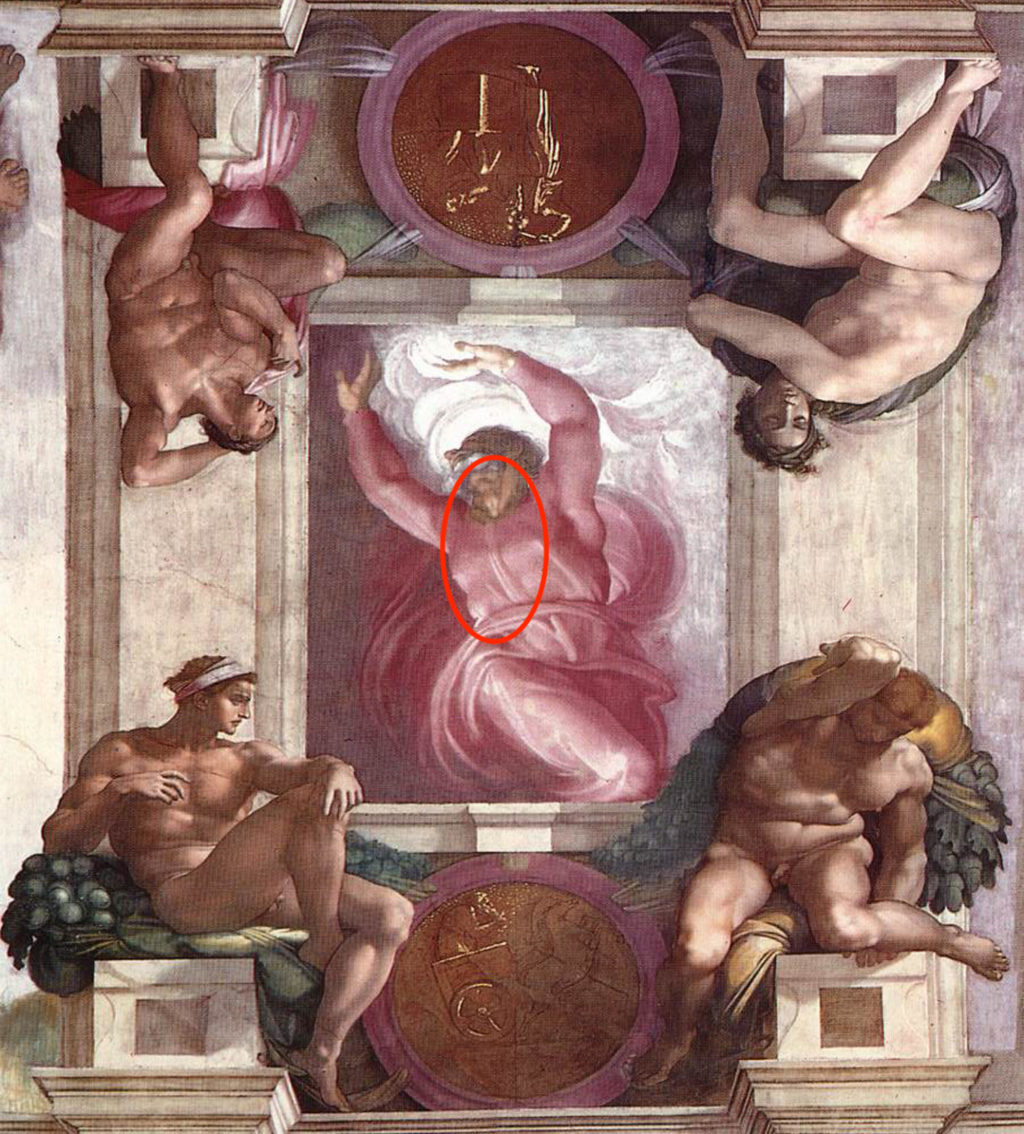
"The Creation of Adam" wasn't the only console in the Sistine Chapel in which Michelangelo hid anatomical illustrations. According to Suk and Tamargo, in "Separation of Light from Darkness," yous tin can find a delineation of the human spinal cord and brain stem in the centre of God'due south chest leading upwardly to his throat.
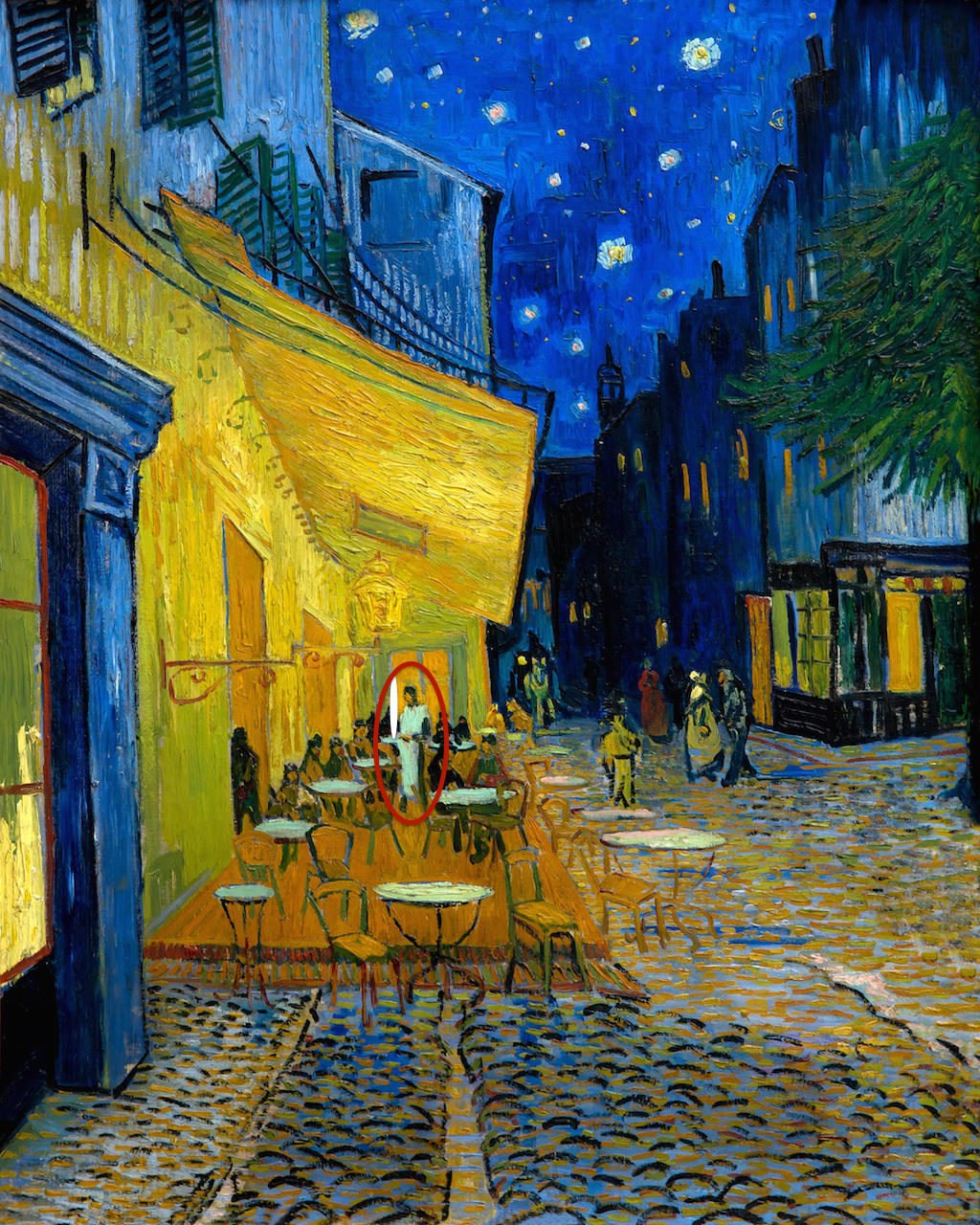
At first glance, Vincent van Gogh's 1888 oil painting looks like it's just what the title describes: a quaint café terrace in a colorful French city. But, in 2015, Van Gogh expert Jared Baxter proposed the theory that the painting is really the creative person'south own version of "The Last Supper."
A close written report shows one fundamental effigy with long hair surrounded by 12 individuals, one of whom seems to be slipping into the shadows like Judas. There are also what announced to be pocket-sized crucifixes hidden throughout the painting, including one above the Jesus-like central figure.
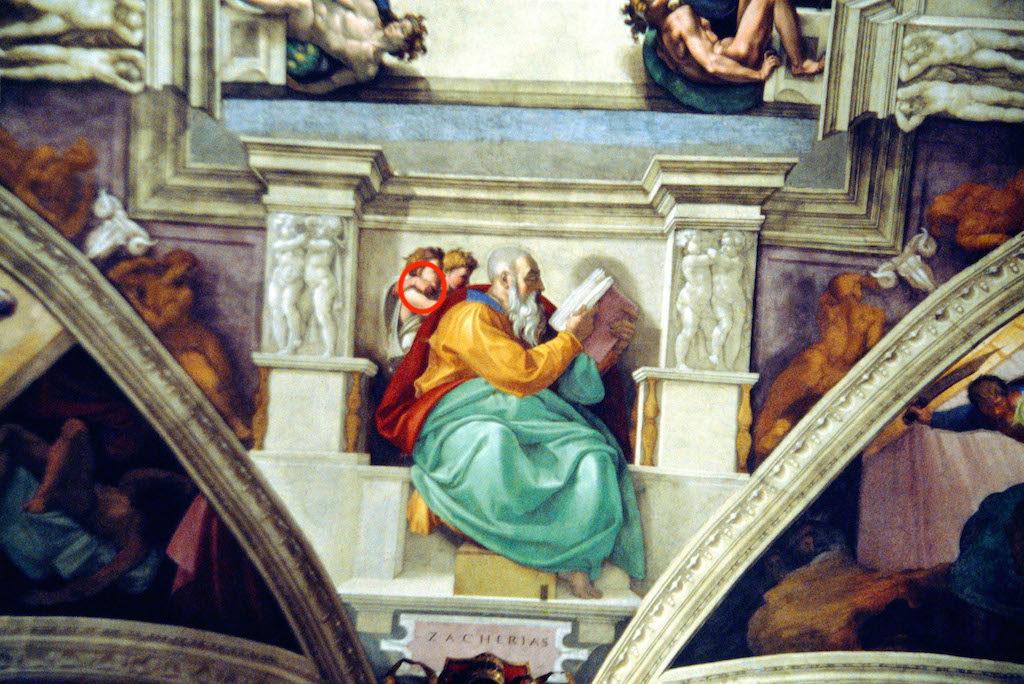
Some of Michelangelo's piece of work in the Sistine Chapel might have some pretty cheeky hidden secrets. "The Prophet Zechariah," for example, seems like a mural of the eponymous prophet reading a volume while two cherubs glance over his shoulder.
Simply, if you look closely, it appears as if one of the angels is "flipping the fig," which is when one puts their thumb betwixt their middle and index fingers. Basically, it'south the ye olde version of the middle finger.
Rabbi Benjamin Blech of Yeshiva University told ABC News: "This possibly is the cardinal to understanding Michelangelo's courage, Michelangelo's true feelings nigh the Pope, and the fact that Michelangelo did non hesitate to present united states with messages that might've been offensive."
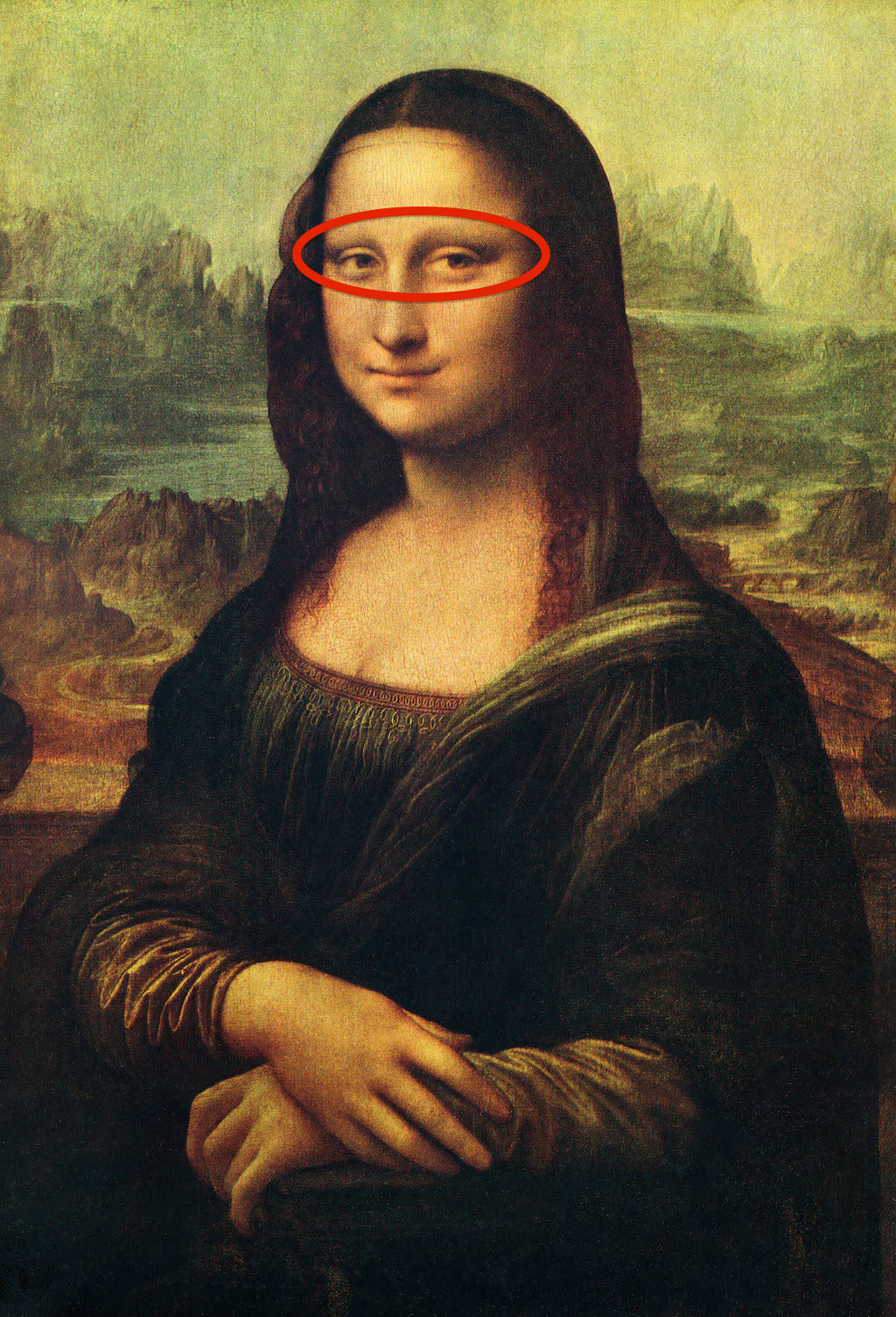
Da Vinci's 15th-century masterpiece is one of the almost recognizable artworks in the world, but there's more to see here than that infamous half-smiling.
Firstly, there'southward some speculation that she'southward pregnant, given the way her arms are positioned over her belly and the veil around her shoulders, which was often worn by pregnant women during the Italian Renaissance.
Merely the newest findings are in her eyes. In 2011, Italian researcher Silvano Vinceti claimed that he found letters and numbers microscopically painted onto them. He told the Associated Pressthat the "L" over her right eye probable stands for the artist's name.
But the meanings of the letter of the alphabet "South" he sees in her left eye and the number "72" under the arched bridge in the backdrop are less clear. Vinceti believes the "S" might refer to a woman in the Sforza dynasty that ruled Milan, meaning the woman in the painting may non beLisa Gherardini, as it's long been believed. As for the "72," Vinceti argues that could be due to the numbers' significance in both Christianity and in Judaism. For example, "7" refers to the creation of the world, and the number "2" could refer to the duality of men and women.
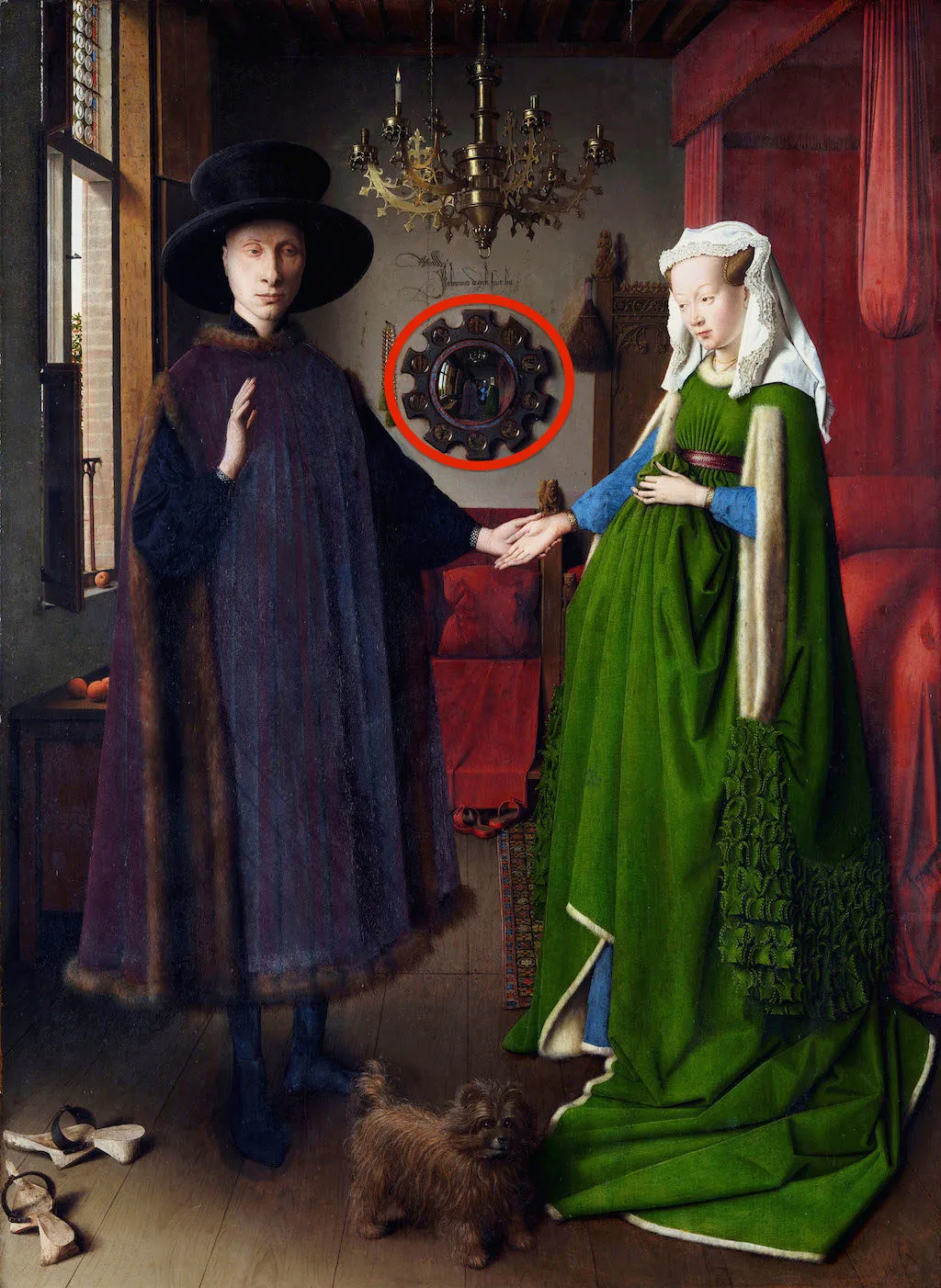
When you outset look atJan van Eyck'due south 1434 oil painting, information technology seems to simply depict the merchantGiovanni di Nicolao Arnolfini and his married woman.
But if you look closely at the mirror in the center of the room, you'll see that there are two figures entering the room. It'south widely believed that one of them is meant to be Van Eyck himself. You'll also observe that in that location's a Latin inscription in very elaborate writing on the wall higher up the mirror, which translates to "Jan van Eyck was here. 1434."
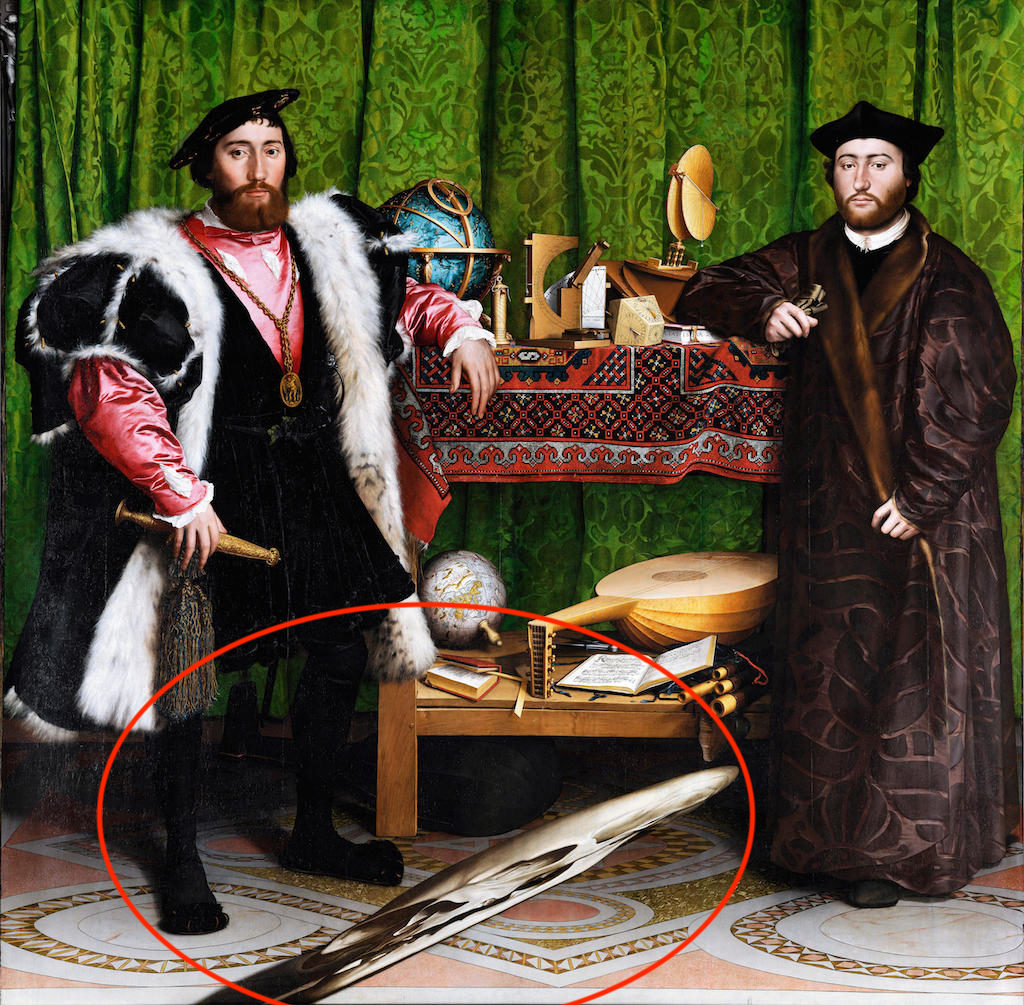
Hans Holbeinthe Younger'south 1533 painting, "The Ambassadors," features a rather impressive illusion at its base of operations. If yous wait at the lopsided prototype at the bottom of the painting from right to left, it appears to exist an anamorphic skull. Scholars believe it'due south intended to be a reminder that death is always around the corner.
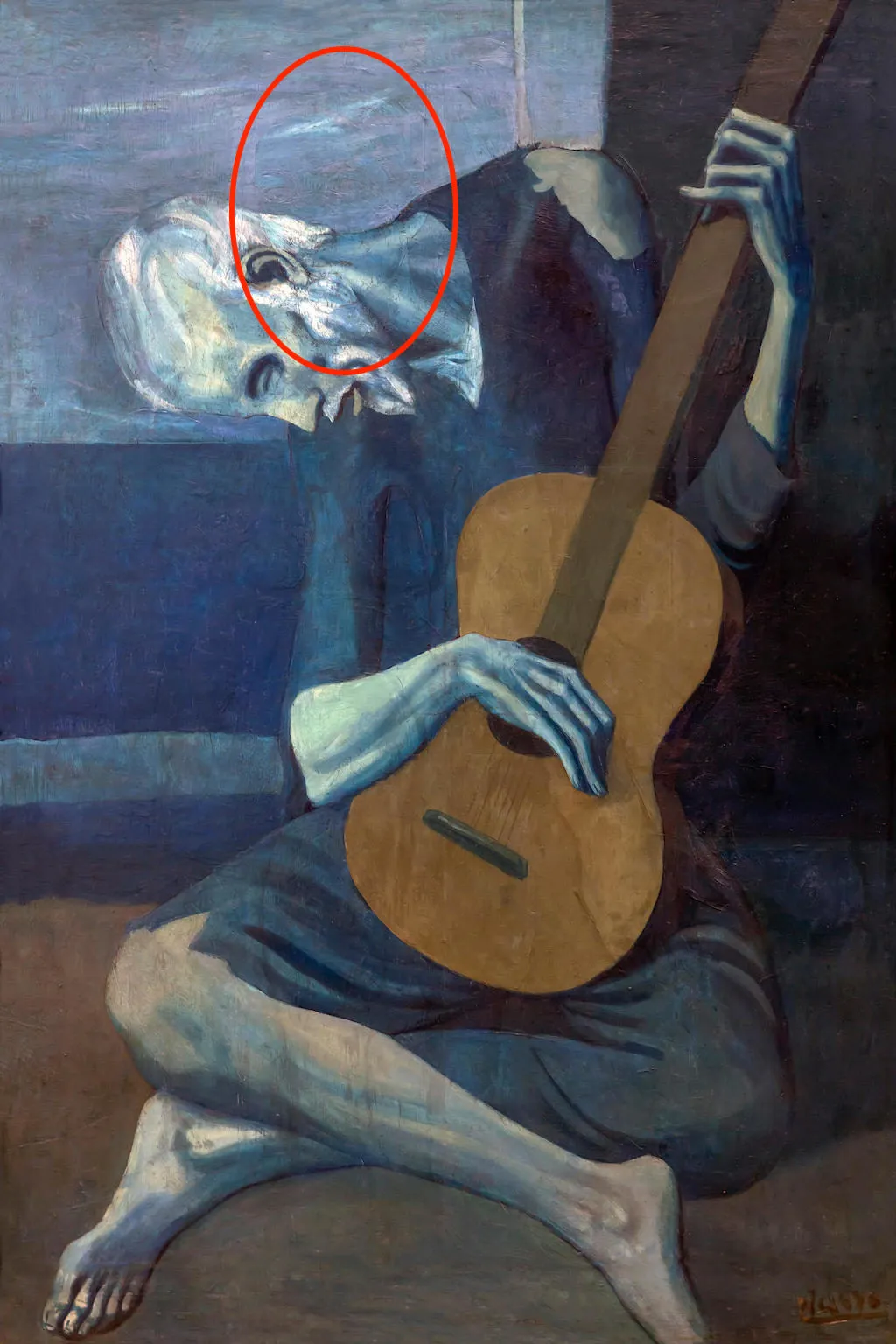
Pablo Picasso's haunting early 1900s depiction of an elderly man cradling a guitar is one of the most revered works of his Blue Flow.
However, in 1998, researchers used an infrared camera and discovered that there is another painting layered underneath it, which features a woman. Now that the paint is fading, information technology'due south get easier to run into the adult female'due south face to a higher place the onetime human being'south neck.
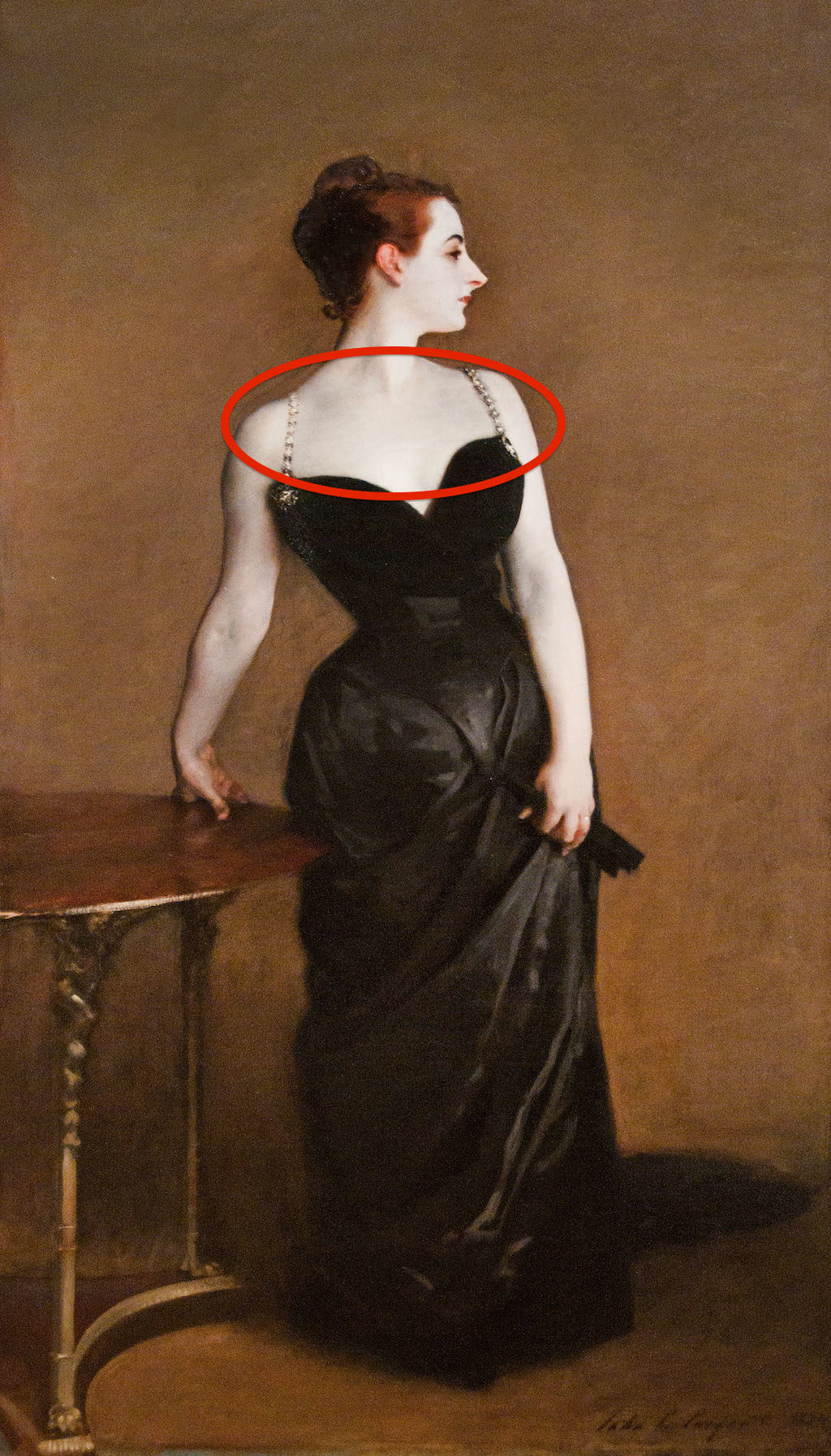
In 1884,John Vocaliser Sargent painted a portrait of wealthy Parisian socialite Virginie Amélie Avegno Gautreau. He originally depicted the jeweled strap of her gown slipping off her shoulder, but the artwork scandalized upper-class club. Sargent had to repaint the straps, rename the painting to disguise the subject'due south name, and move to London to avoid further embarrassment.
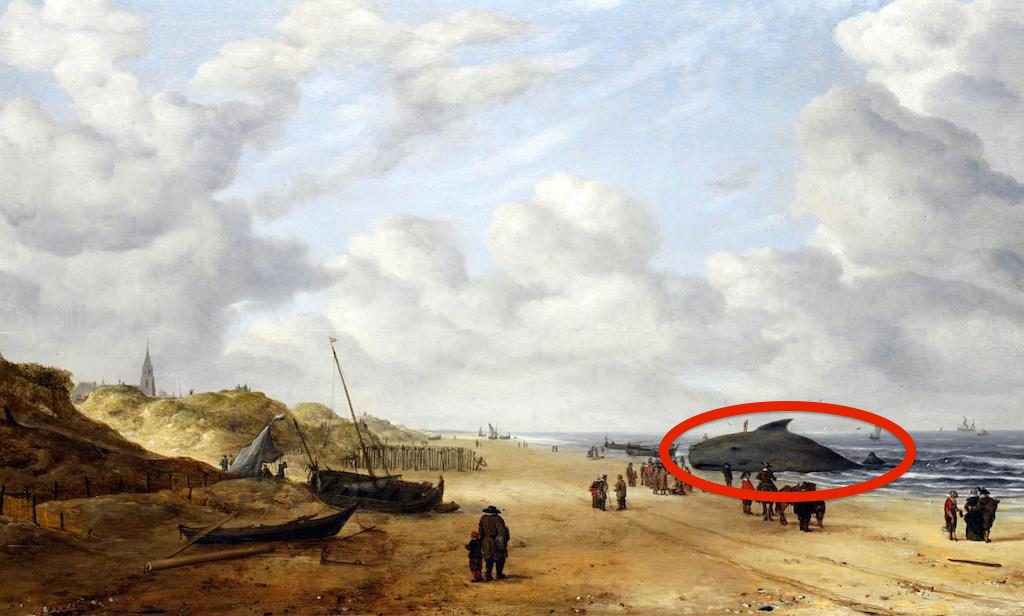
If you visitedHendrick van Anthonissen's "View of Scheveningen Sands" at the Fitzwilliam Museum in Cambridge, England between 1873 and 2014, y'all wouldn't have seen that giant beached whale.
That's because it took 140 years for someone to find that in the artwork, a bunch of people are gathered in a cluster to gaze at zilch. When conservator Shan Kuang removed a glaze of yellow varnish while restoring the 1641 landscape, she revealed a beached whale and solved the mystery.
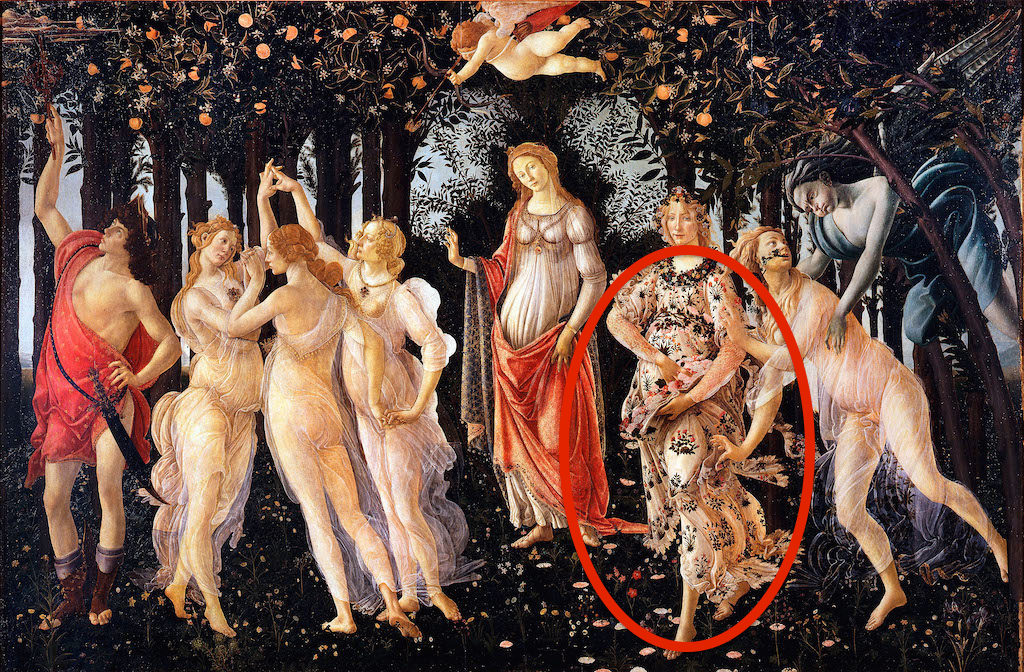
The specific pregnant behind Sandro Botticelli'due south masterpiece is contested. Merely information technology's widely accepted that on some level, the artwork is a celebration of bound and the fertility the flavour brings.
The painting does take hugger-mugger delights for horticulture enthusiasts. Botanists accept identified at least 200 different species of plants in "Primavera" that are rendered in specific detail.
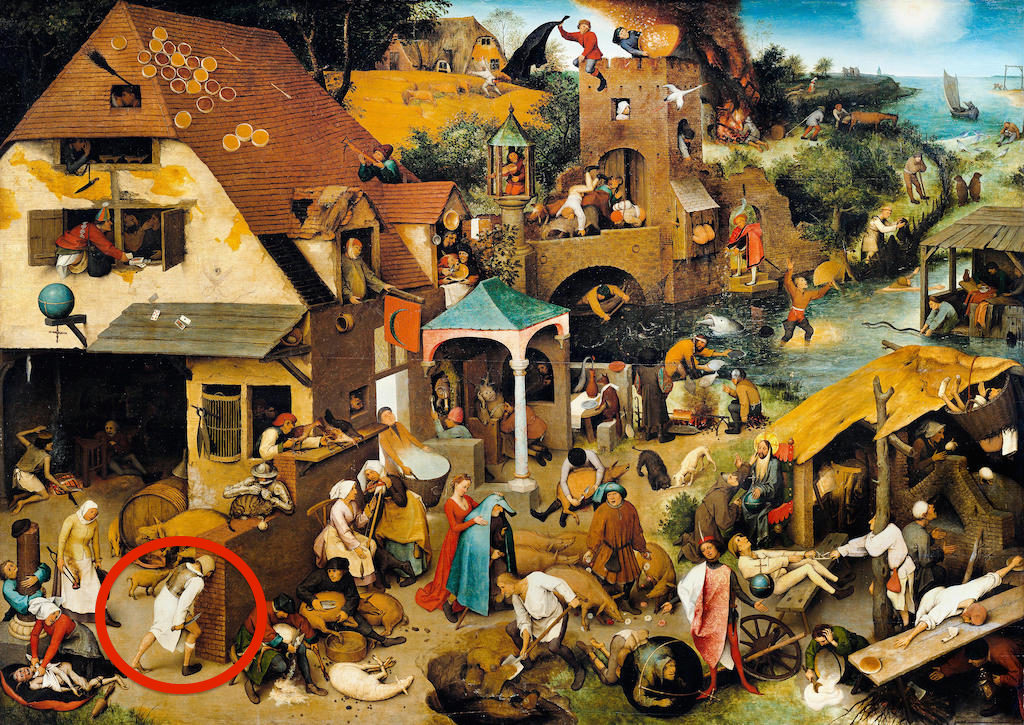
This 1559 oil painting by Pieter Bruegel the Elder—which is likewise known as "The Bluish Cloak" or "The Topsy Turvy World"—has at to the lowest degree 112 identifiable proverbs acted out within it. Some of them are idioms that we all the same use, like "pond against the tide," "banging one'due south head against a brick wall" (which is circled above), and "armed to the teeth." Try to encounter how many you tin proper noun and try not to go cross-eyed.
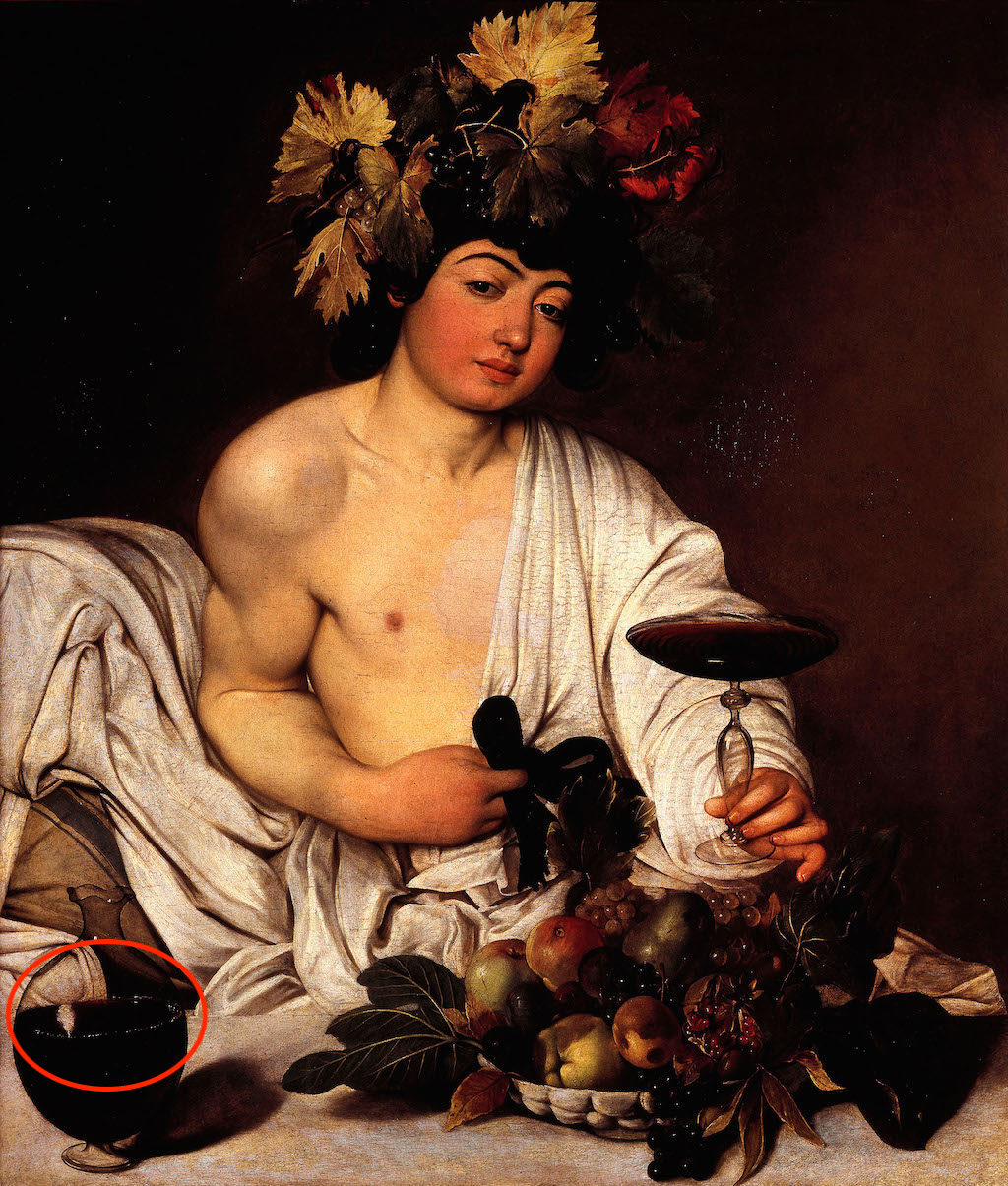
Michelangelo Merisi da Caravaggio's 1595 painting "Bacchus" is one of his virtually acclaimed works.
In that location doesn't seem to exist much hidden, only thank you to modern engineering called reflectography, art experts in 2009 were able to discover that the paradigm of a human being is actually hidden in the carafe of wine in the bottom left. And information technology may just be Da Caravaggio himself. "Caravaggio painted a person in an upright position, with an arm held out towards a sheet on an easel. It appears to exist a portrait of himself while he was painting," skilful Mina Gregori toldThe Telegraph.
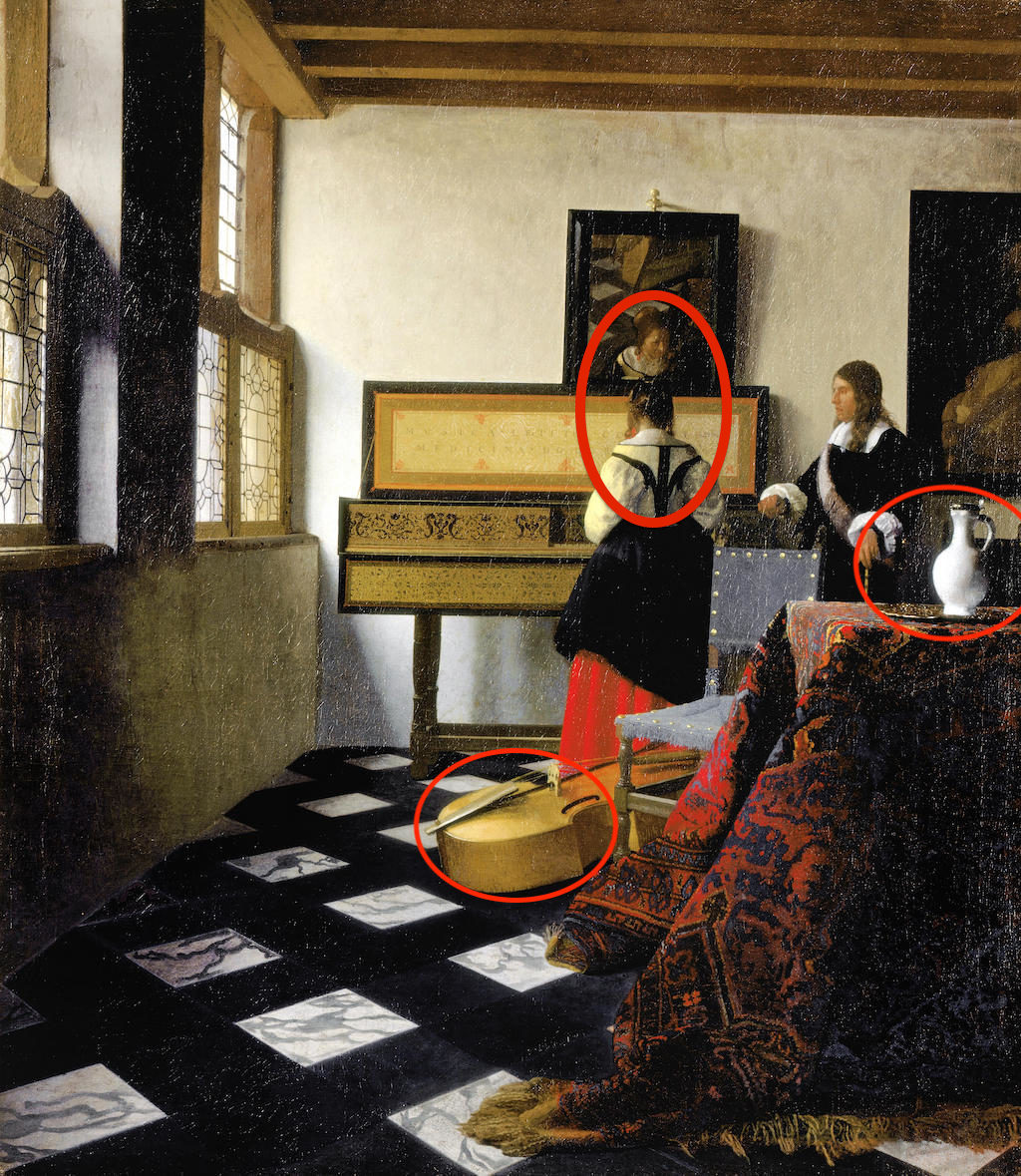
Alamy
Much of Johannes Vermeer's work is brimming with hugger-mugger symbols of sexuality. For case, in "The Music Lesson," it seems as though the woman in the painting is gazing down at the keys of a virginal, an musical instrument associated with female purity. But she's actually looking away from it to meet the gaze of her instructor, as you tin see in the mirror above her. The wine on the tabular array is as well an aphrodisiac, and the stringed musical instrument on the floor could exist seen as a phallic symbol.
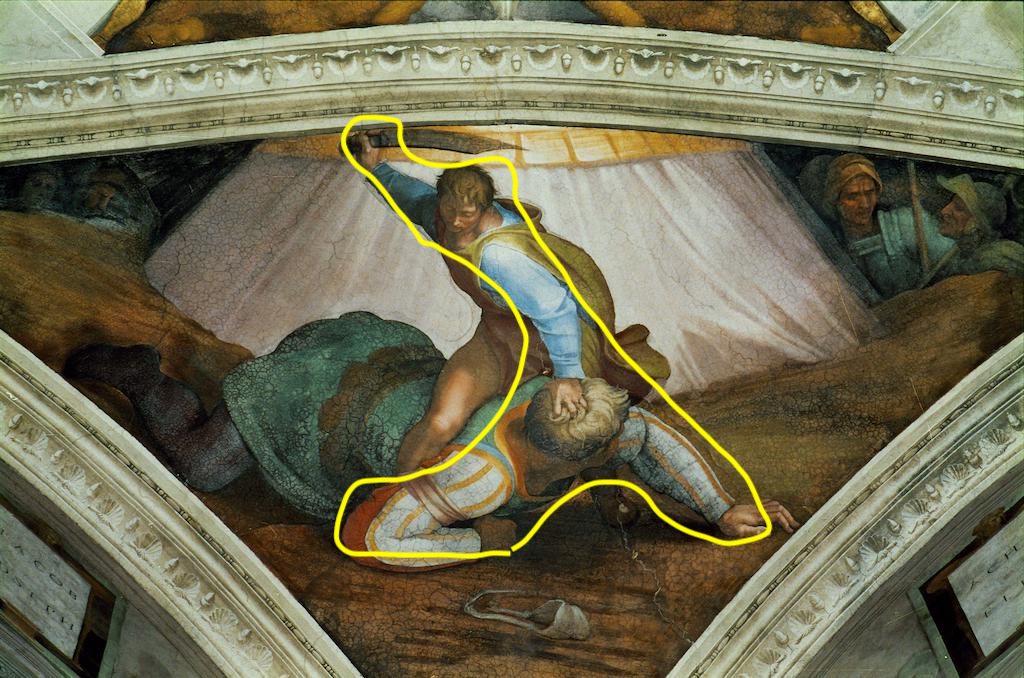
This console on the Sistine Chapel shows David defeating the giant Goliath. But Michaelangelo added something pretty cool to this particular scene: David's stance is intentionally in the shape of the Hebrew letter "gimel." This letter of the alphabet tends to refer to advantage and punishment, which is perfect for the biblical underdog story.
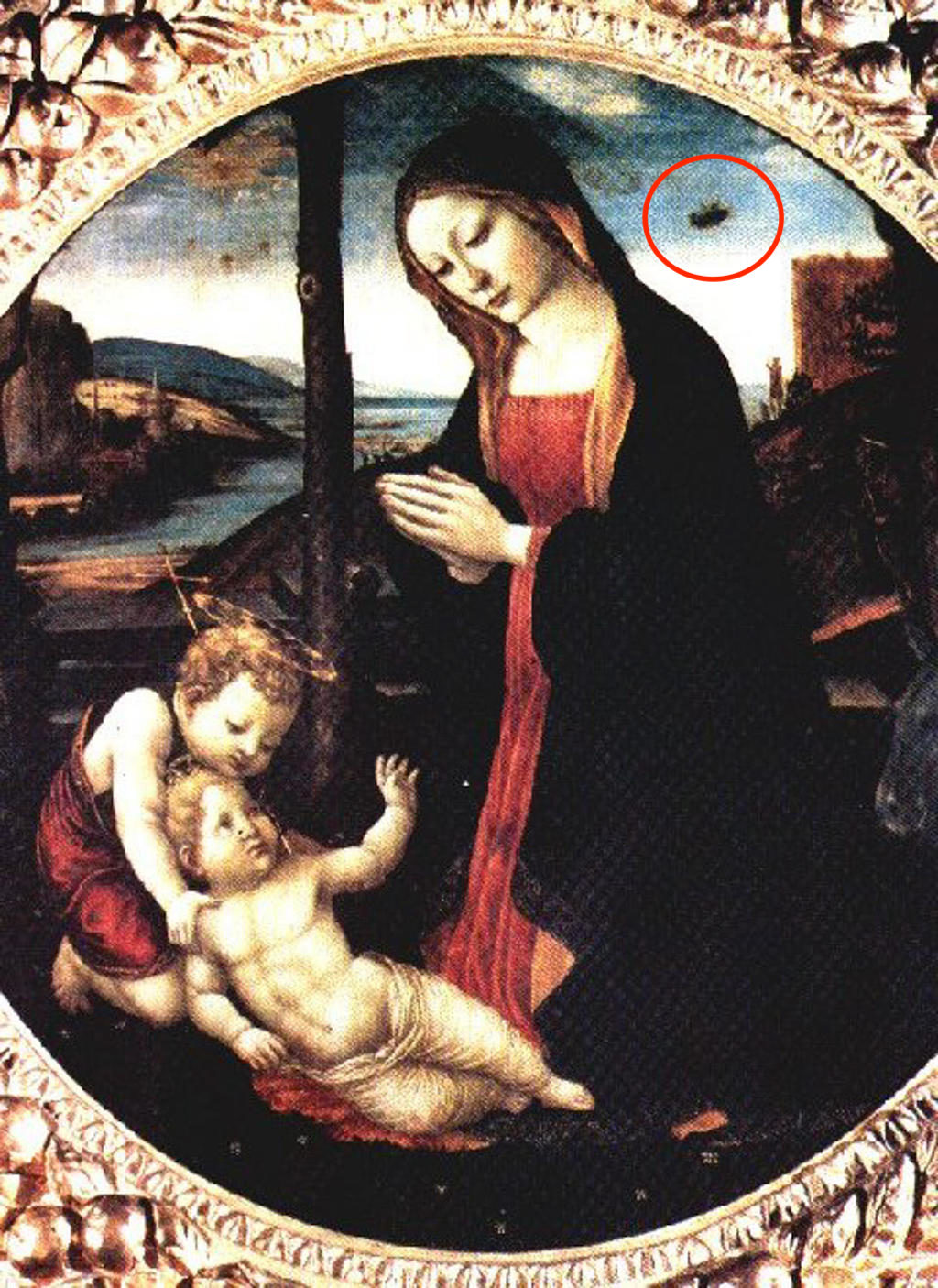
Italian Renaissance painter Domenico Ghirlandaio's work "Madonna with Saint Giovannino" gets a lot of attention for the strange item hovering behind Madonna'south head. Some believe it looks like a UFO, which could be an indication of early alien sightings dating back to the 15th century.
Others believe the object is a representation of the Gospel of Luke passage: "Shepherds abiding in the field keeping watch over their flock by dark. And lo, an angel of the Lord come up upon them, and the glory of the Lord shone round about them." Information technology all depends which side of the alien debate you stand on, we suppose.
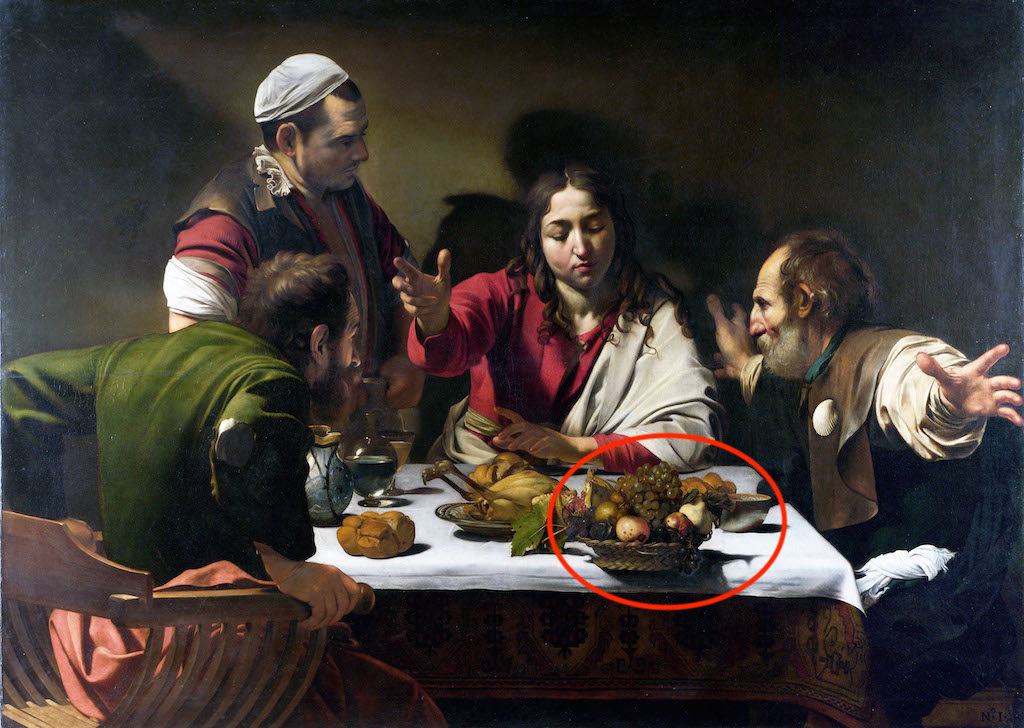
Caravaggio hid a fun footling Easter egg in his 1601 painting "Supper at Emmaus." The shadow cast by the handbasket of fruit on the table looks like a fish, which could be an allusion to when Jesus fed the masses with just a few fish.
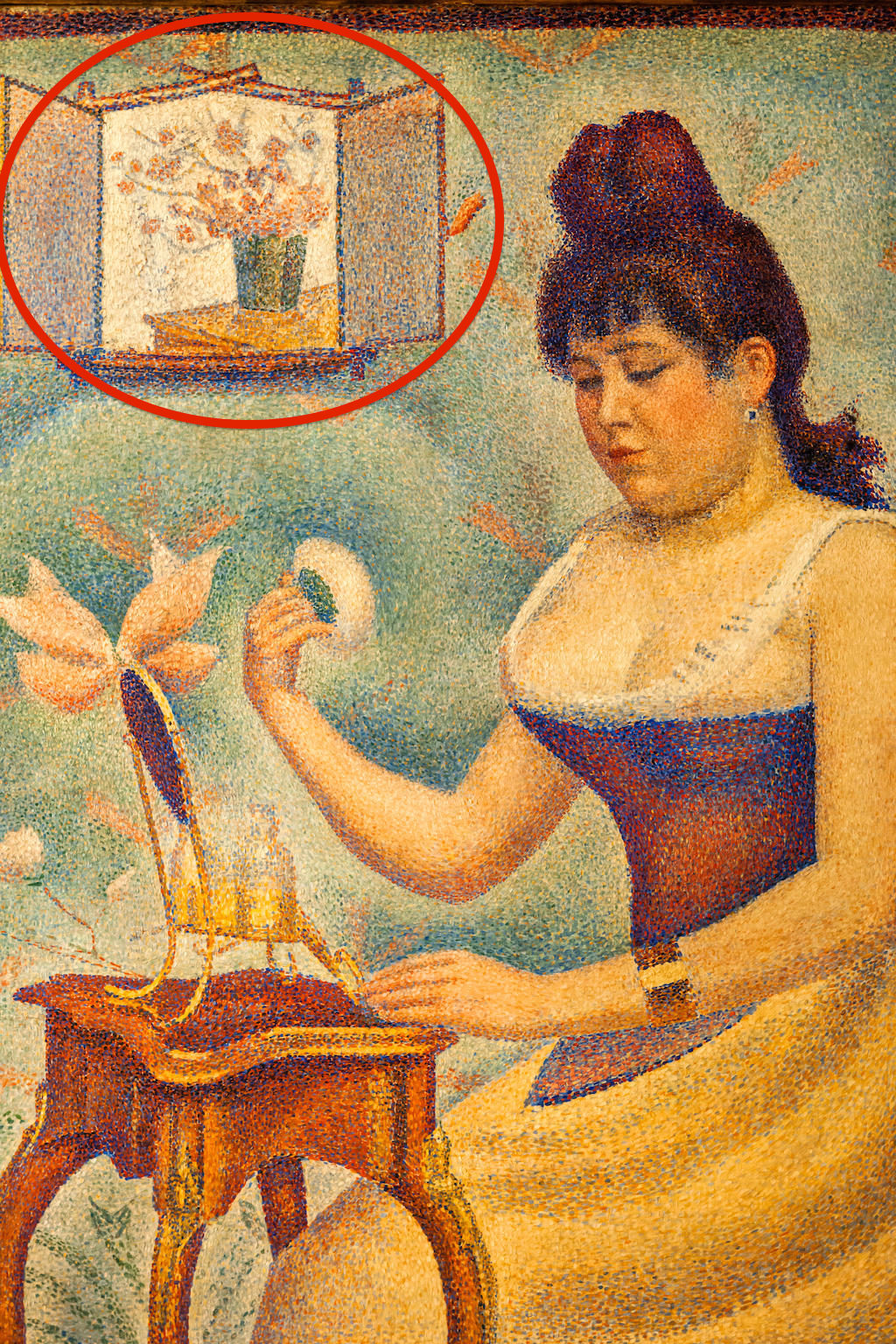
Georges Seurat'due south painting of a woman putting on makeup may look innocent enough, but in that location'due south a lot more to explore in this late 19th century work.
Contempo X-rays have revealed that the seemingly sweet bloom painting in the top left corner of the painting was originally a self-portrait of Seurat, merely the story goes that "a friend warned him information technology looked bizarre."
It's peculiarly noteworthy since information technology was afterwards revealed that the adult female in the painting was Seurat'southward twenty-year-onetime mistress Madeleine Knoblochand that cocky-portrait was the only known one Seurat e'er did.

Equally has long been the case with "Mona Lisa," the facial expression on Michelangelo'south "David" has been the subject of debate for many years.
In 2007, all the same, Stanford University's Digital Michelangelo Project discovered that if you view this enormous statue from below, as people oftentimes do, he appears to have a at-home and confident look on his face up. Just when viewed from a college vantage bespeak, David seems to exist feeling pretty tense virtually battling Goliath.
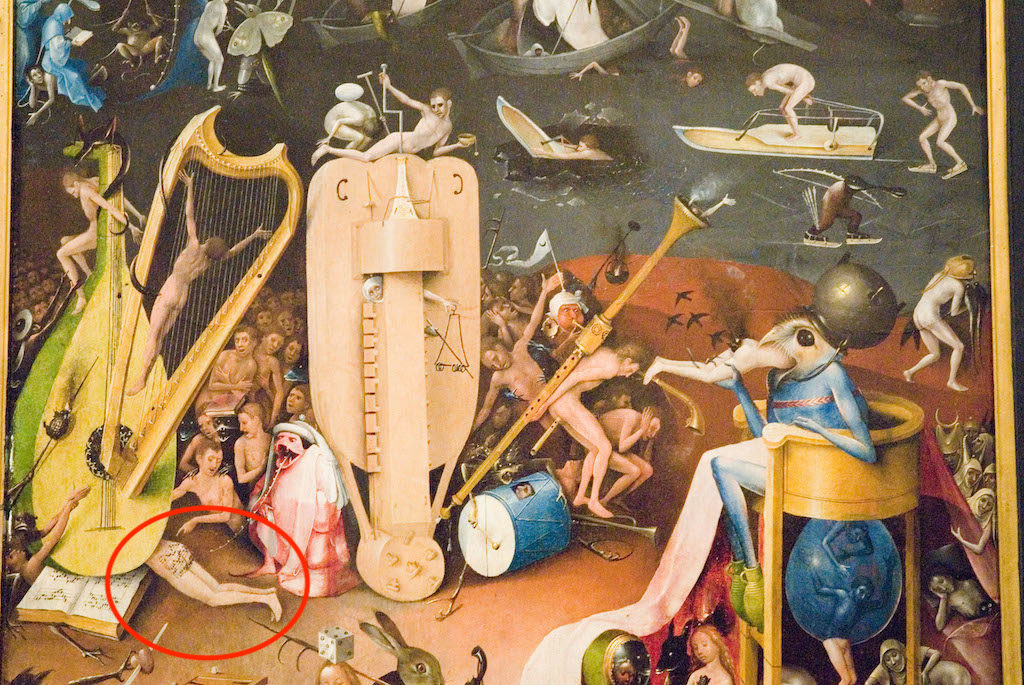
Hieronymus Bosch'south panel on the perils of worldly temptation has many interesting references within it, but 1 of the strangest was discovered by a college student in 2014.
In the lower lefthand corner of the work—which was done former between the late 15th and early 16th centuries—you can run into a musical score tattooed beyond someone'southward rear-end. The student translated the music into modern note, and y'all tin can now listen to it. Spoiler alert: It's fittingly creepy.
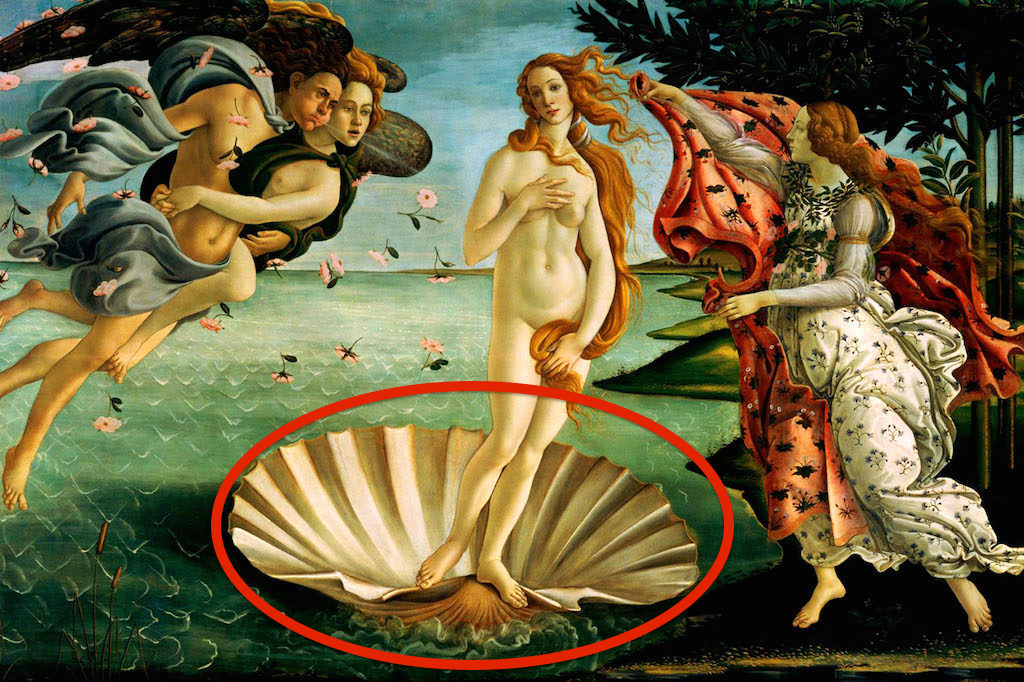
The nudity in Botticelli'due south famous painting was pretty groundbreaking for the late 15th century. Merely that'south non where the artist's boldness ends.
Some art historians believe that the scallop vanquish that Venus is riding the ocean waves on is actually meant to symbolize female genitalia and thereby allude to fertility.
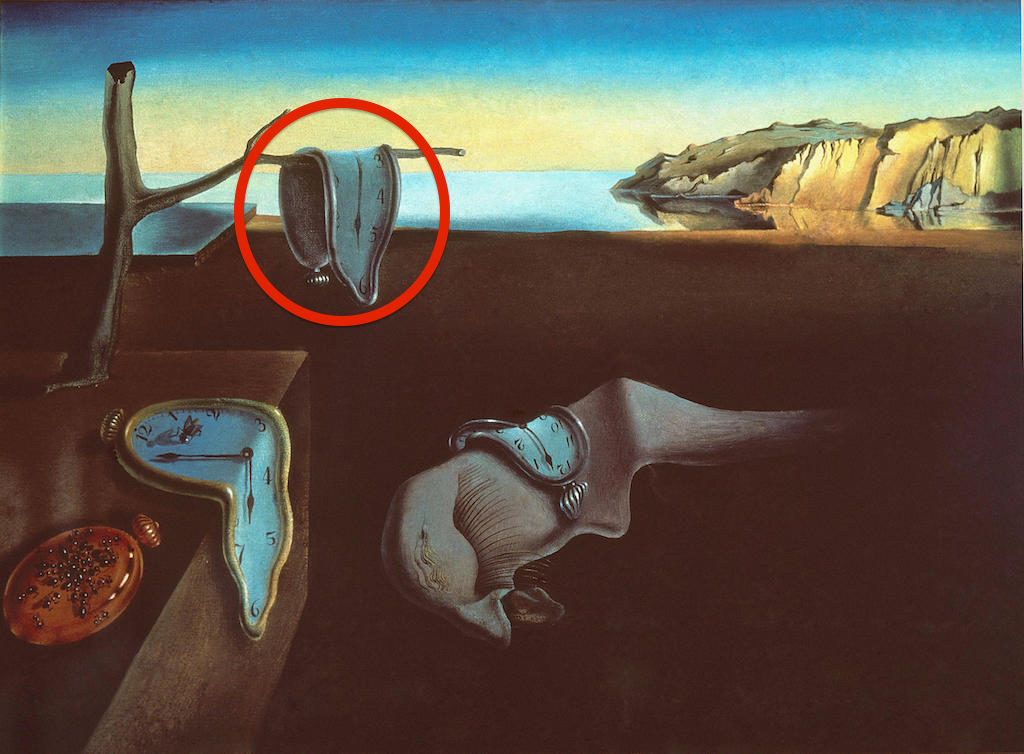
Given what at ingenious surrealist painter Salvador Dalí was, it'due south natural to presume that the melting clocks in his 1931 painting "The Persistence of Retention" are an allusion to Albert Einstein's theory of relativity.
Only, as it turns out, the clocks were actually inspired by gooey Camembert cheese. He's been quoted equally proverb that the famous melting clocks "are cypher other than the tender, improvident and solitary paranoiac-critical Camembert of time and infinite."
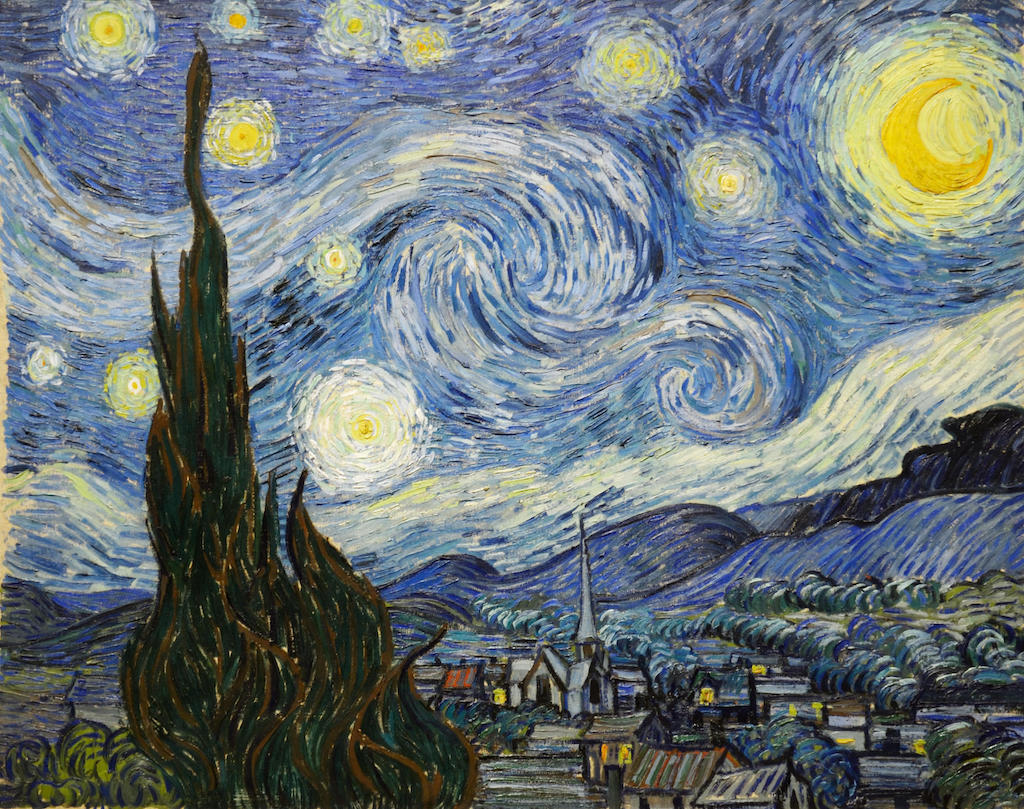
In a 2014 TED Talk, science research acquaintanceNatalya St. Clair explained how the motion in Vincent van Gogh'southward 1889 painting "The Starry Night" hinted at an extremely complicated mathematical concept called turbulent menstruum decades before scientists discovered it.
"In 2004, using the Hubble Space Telescope, scientists saw the eddies of a afar cloud of grit and gas effectually a star, and it reminded them of Van Gogh's 'Starry Nighttime,'" St. Clair explained. That motivated scientists to report Van Gogh's paintings in detail and when they did, "they discovered that there is a singled-out pattern of turbulent fluid structures … hidden in many of Van Gogh'south paintings."
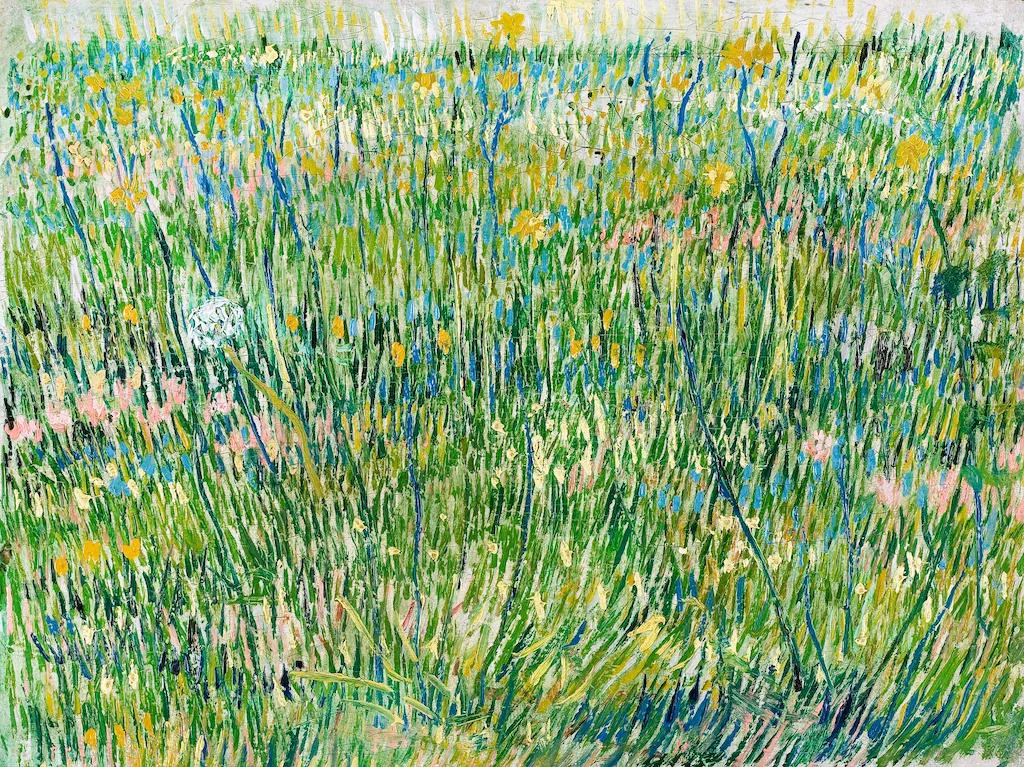
Van Gogh's 1887 painting "Patch of Grass" vividly recreates a dynamic pastoral scene, just that'due south non all.
In 2008, Dutch scientists Joris Dik and Koen Janssens pioneered an Ten-ray technique that helped them observe a hidden portrait of a peasant woman buried under the blades of grass. Van Gogh was known to paint over his earlier works—and according to The Guardian, experts estimate that about a third of his initial pieces accept hidden compositions curtained beneath them.
To discover more than amazing secrets about living your best life, click hither to follow us on Instagram!
Source: https://bestlifeonline.com/secrets-hidden-in-famous-art/
0 Response to "What Is the Secret to Art That Looks Like a Child Could Do It"
Post a Comment